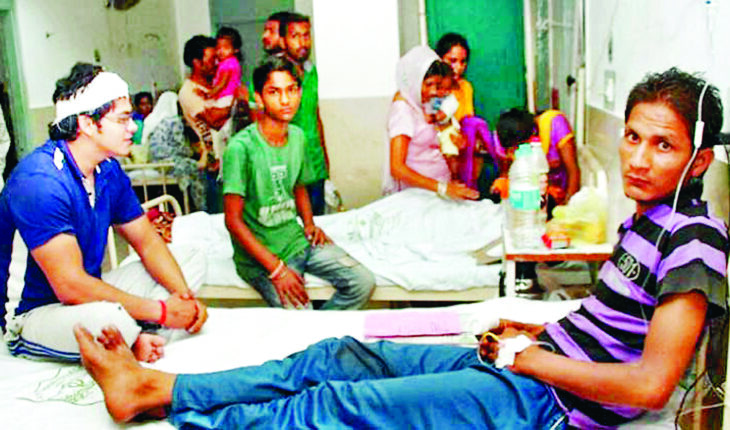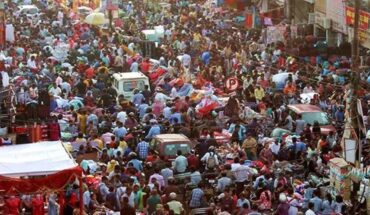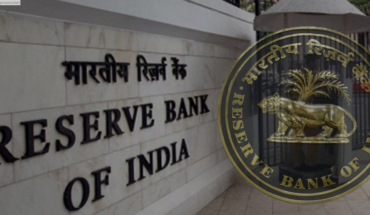Amit Prakash Singh says a thoughtful response to the disaster may save several lives in future
When we talk about development, we should always remember Mahatma Gandhi. Once he had aptly remarked, the earth has enough to sustain everyone’s need. But it has too little to satisfy everyone’s greed. This has almost forgotten when the development projects are shown green flag. We remember the words of Gandhi when any mishap takes shape, ruining lives.
Recently in the state of Uttarakhand a devastating happening took place. This was a great calamity. Despite of bad weather, dim light, remote location, debris, mud and constantly water rising the rescue crews continue to scour muck filled ravines for the survivors of the recent disaster in Chamoli district of Uttarakhand .in past fortnight, fifty dead bodies have been taken out from the tunnels and forty people have been rescued, but search for 170 is still underway. The excavators have cleared a small tunnel. And they are working on two kilometers long tunnel beneath the Tapovan Vishnugadh dam to rescue workers trapped.
It is said that the glacial lake flood occurred when water dammed by a glacier got released. This brought calamity causing once again death and disaster in this fragile and gradually weakened part of Himalayas’ seismic activity and a buildup of water pressure caused it to flood, but one particular concern seems is climate change. As environment expert Dr. Atul Sati said, after having a visit to the site said, in Rishiganga Catchment area a glacier fell from high Nanda Devi mountains due to heavy snowfall. It slid and somehow a part of this fell on confluence of two rivers Rishiganga and Dhauliganga. Dr. Naresh Rana said it seems the part which has blocked the flow of the water and now turned into a four hundred meters long lake although it is trickling down to river. But sooner or later, it may burst or say may bring heavy flood through the river. To study the future course of this lake the Chief Minister of the state has deputed some mountaineers from NDRF,to keep a watch and inform each development.
The chief minister has taken a bird’s eye view from chopper and ITBP, NDRF, Army and Navy contingents are engaged in the rescue work. There are several difficulties as the water level of the rivers is constantly rising. Even then the troops are doing their best to save lives of the workers at the affected sites. The troops got into action immediately and monitored the topography of the areas with the help of advanced drones and helicopters.
The flow in the river Rishiganga was so powerful in the wee hours that it took away Rishiganga power project which was supposed to generate fifteen megawatts of power. Similarly the powerful flood destroyed the NTPCL {National Power Corporation Limited} power project under construction. It was to produce five hundred megawatts of power after completion. At Tapovan , district Chamoli the constructing material , tunnels and machines all got destroyed with mud , sludge and debris .
The disaster troops got active on 7thFebruary afternoon, and did their best. They speeded the rescue process in the disaster hit areas with the help of machines to clear the small tunnel and a large portion of long tunnel with curve by eventually clearing the muck. It is said that on the both sides of the river, several villages were settled which is left as plain hilly areas now. Still, it is only a speculation that how many people died in the deluge as a number of people are still missing.
The state of Uttaranchal is situated on the fragile land of Himalayan range of mountains. It is said that the Tibetan Plateau was formed when Indian tectonic plate collided with Eurasian plate. It is known that the Himalayan range of mountains are the world’s youngest mountain and yet in the formation period. Recently we came to know that after the earthquake in Nepal the Mount Everest has grown by 86 centimeters. It proves that the area is still in process to grow.
The human interventions, natural formations and climate change can escalate such disasters. The unregulated tourism and related development work. Unplanned constructions, violating environmental laws and regulations is responsible for the increased intensity and scale of this disaster, says Himanshu Thakker, Co- Ordinator of South Asia Network of Rivers, Dams, and People. He says, the hydro power projects are ecological and economically unviable and socially unacceptable.
Due to lack of farsightedness of state and central governments the people of Uttarakhand are sliding towards “JalSamadhi”,{watery grave} says writer and social activist Vimal Bhai working with local NGO Matu Jansangathan , in Uttarakhand. He said the destructive projects like Tapovan Vishnugarh and several other projects like Rupaligadh Dam on Mahakakali river and many other projects were passed in spite of huge public protests by the National Environment Appellate.
The environment activists have had long been criticising the development of Hydropower Projects particularly after the deadly flash disaster in 2013 in which more than six hundred people were killed or lost as unconfirmed reports. Quite a lot of property was also lost and damaged. Nonetheless, the government policies long been attracting the investors and private companies to develop more projects in the area.
However, the Central Water Commission has now begun to conduct simulation studies on the confirmed artificial lake which is formed in the upper stretches of Rishiganga with a length of 350 meters and height of 60 meters and examining the possibility of controlled blast to drain out the water. This study will monitor the volume of water released when the lake is burst and records the amount of time it takes to reach downstream.
It is really strange that everybody is worried about the flood and the destruction of power projects supposed to come up in near future but there is no discussion on the dangers of Chardham projects and other related projects. The Govt. authorities never go through the reports submitted by various commission reports even on the environment flow of the rivers. Even the reports submitted by the academicians are never taken care.
There is no doubt that we have already put a dent on the health of this country and planet.The changes we set on motion today may not provide a respite from such calamities. Nevertheless, a significant behavioural change today and thoughtful response to this disaster may save us from such devastations in future.
Recently in the state of Uttarakhand a devastating happening took place. This was a great calamity. Despite of bad weather, dim light, remote location, debris, mud and constantly water rising the rescue crews continue to scour muck filled ravines for the survivors of the recent disaster in Chamoli district of Uttarakhand .in past fortnight, fifty dead bodies have been taken out from the tunnels and forty people have been rescued, but search for 170 is still underway. The excavators have cleared a small tunnel. And they are working on two kilometers long tunnel beneath the Tapovan Vishnugadh dam to rescue workers trapped.
It is said that the glacial lake flood occurred when water dammed by a glacier got released. This brought calamity causing once again death and disaster in this fragile and gradually weakened part of Himalayas’ seismic activity and a buildup of water pressure caused it to flood, but one particular concern seems is climate change. As environment expert Dr. Atul Sati said, after having a visit to the site said, in Rishiganga Catchment area a glacier fell from high Nanda Devi mountains due to heavy snowfall. It slid and somehow a part of this fell on confluence of two rivers Rishiganga and Dhauliganga. Dr. Naresh Rana said it seems the part which has blocked the flow of the water and now turned into a four hundred meters long lake although it is trickling down to river. But sooner or later, it may burst or say may bring heavy flood through the river. To study the future course of this lake the Chief Minister of the state has deputed some mountaineers from NDRF,to keep a watch and inform each development.
The chief minister has taken a bird’s eye view from chopper and ITBP, NDRF, Army and Navy contingents are engaged in the rescue work. There are several difficulties as the water level of the rivers is constantly rising. Even then the troops are doing their best to save lives of the workers at the affected sites. The troops got into action immediately and monitored the topography of the areas with the help of advanced drones and helicopters.
The flow in the river Rishiganga was so powerful in the wee hours that it took away Rishiganga power project which was supposed to generate fifteen megawatts of power. Similarly the powerful flood destroyed the NTPCL {National Power Corporation Limited} power project under construction. It was to produce five hundred megawatts of power after completion. At Tapovan , district Chamoli the constructing material , tunnels and machines all got destroyed with mud , sludge and debris .
The disaster troops got active on 7thFebruary afternoon, and did their best. They speeded the rescue process in the disaster hit areas with the help of machines to clear the small tunnel and a large portion of long tunnel with curve by eventually clearing the muck. It is said that on the both sides of the river, several villages were settled which is left as plain hilly areas now. Still, it is only a speculation that how many people died in the deluge as a number of people are still missing.
The state of Uttaranchal is situated on the fragile land of Himalayan range of mountains. It is said that the Tibetan Plateau was formed when Indian tectonic plate collided with Eurasian plate. It is known that the Himalayan range of mountains are the world’s youngest mountain and yet in the formation period. Recently we came to know that after the earthquake in Nepal the Mount Everest has grown by 86 centimeters. It proves that the area is still in process to grow.
The human interventions, natural formations and climate change can escalate such disasters. The unregulated tourism and related development work. Unplanned constructions, violating environmental laws and regulations is responsible for the increased intensity and scale of this disaster, says Himanshu Thakker, Co- Ordinator of South Asia Network of Rivers, Dams, and People. He says, the hydro power projects are ecological and economically unviable and socially unacceptable.
Due to lack of farsightedness of state and central governments the people of Uttarakhand are sliding towards “JalSamadhi”,{watery grave} says writer and social activist Vimal Bhai working with local NGO Matu Jansangathan , in Uttarakhand. He said the destructive projects like Tapovan Vishnugarh and several other projects like Rupaligadh Dam on Mahakakali river and many other projects were passed in spite of huge public protests by the National Environment Appellate.
The environment activists have had long been criticising the development of Hydropower Projects particularly after the deadly flash disaster in 2013 in which more than six hundred people were killed or lost as unconfirmed reports. Quite a lot of property was also lost and damaged. Nonetheless, the government policies long been attracting the investors and private companies to develop more projects in the area.
However, the Central Water Commission has now begun to conduct simulation studies on the confirmed artificial lake which is formed in the upper stretches of Rishiganga with a length of 350 meters and height of 60 meters and examining the possibility of controlled blast to drain out the water. This study will monitor the volume of water released when the lake is burst and records the amount of time it takes to reach downstream.
It is really strange that everybody is worried about the flood and the destruction of power projects supposed to come up in near future but there is no discussion on the dangers of Chardham projects and other related projects. The Govt. authorities never go through the reports submitted by various commission reports even on the environment flow of the rivers. Even the reports submitted by the academicians are never taken care.
There is no doubt that we have already put a dent on the health of this country and planet.The changes we set on motion today may not provide a respite from such calamities. Nevertheless, a significant behavioural change today and thoughtful response to this disaster may save us from such devastations in future.
Amit Prakash Singh is a senior journalist based in New Delhi. Views expressed are his own






